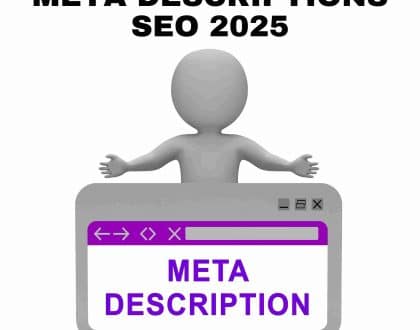Best Social Media Marketing Strategy in 2023

Best Social Media Marketing Strategy in 2023. In the dynamic world of digital marketing, staying ahead of the curve is essential. As we dive into 2023, the landscape of social media marketing continues to evolve, presenting both challenges and opportunities for businesses. A well-crafted social media strategy is no longer just a luxury; it’s a necessity for brands aiming to connect with their target audience and drive meaningful engagement. Let’s explore the best social media marketing strategy for 2023 that can help businesses thrive in this ever-changing environment.
Best Social Media Marketing Strategy in 2023
1. Data-Driven Insights
The heart of any successful social media strategy lies in understanding your audience. In 2023, businesses need to leverage data-driven insights more than ever before. Utilize advanced analytics tools to gain a deep understanding of your audience’s behavior, preferences, and demographics. By analyzing this data, you can tailor your content to resonate with your audience, ensuring your messages hit the right mark.
2. Video Dominance
Video content continues to reign supreme on social media platforms. The attention span of online users is getting shorter, making snackable, engaging video content a must-have. Live streaming, short-form videos, and interactive content like polls and quizzes can captivate your audience and encourage them to stay connected with your brand.
3. Ephemeral Content
Ephemeral content, which disappears after a set period, has gained immense popularity with the rise of platforms like Instagram Stories and Snapchat. This form of content encourages a fear of missing out (FOMO) and provides a unique opportunity for businesses to showcase behind-the-scenes moments, promotions, and limited-time offers.
4. Social Commerce
The integration of shopping features within social media platforms is a game-changer. In 2023, prioritize social commerce by setting up shops on platforms like Instagram, Facebook, and Pinterest. This seamless shopping experience allows users to make purchases directly from your social media posts, reducing friction in the buyer’s journey.
5. AI and Chatbots
Artificial Intelligence (AI) and chatbots are revolutionizing customer service on social media. Automated chatbots can handle inquiries, provide quick responses, and even guide users through the purchasing process. This enhances user experience and ensures round-the-clock engagement.
6. Personalization at Scale
Personalization goes beyond addressing customers by their first name. In 2023, use the wealth of data available to create highly personalized experiences. Segment your audience based on their interests, behaviors, and buying patterns. Tailor your content to each segment, ensuring that every interaction feels customized.
7. Influencer Partnerships
Influencer marketing continues to be a valuable strategy. However, the focus is shifting towards long-term partnerships and authenticity. Choose influencers whose values align with your brand and collaborate on campaigns that resonate with their genuine audience.
8. Sustainability and Social Responsibility
Modern consumers value brands that are socially responsible. Showcase your brand’s commitment to sustainability, ethical practices, and social causes through your social media content. Authenticity is key; ensure that your efforts are genuine and not just performative.
9. Augmented Reality (AR) Experiences
AR is transforming how users interact with content online. Implement AR filters, effects, and experiences to create interactive content that users can engage with in a unique and memorable way.
10. Platform Diversity
While Facebook and Instagram still dominate, consider diversifying your platform presence. TikTok, LinkedIn, Twitter, and emerging platforms offer unique demographics and engagement opportunities. Tailor your content to fit the context and user expectations of each platform.
Best Social Media Marketing Strategy
Segment 1: Strategy and Planning
Set Clear Objectives:
Define specific, measurable goals for your social media efforts, such as brand awareness, lead generation, or community engagement.
Know Your Audience:
Conduct thorough research to understand your target audience’s preferences, behaviors, and demographics. Create buyer personas to guide your content creation.
Choose the Right Platforms:
Focus your efforts on platforms where your audience is most active. Different demographics favor different platforms.
Competitor Analysis:
Study your competitors’ social media strategies to identify gaps and opportunities for differentiation.
Content Calendar:
Plan your content in advance using a content calendar. This ensures consistent posting and allows for timely content creation.
Segment 2: Content Creation
Quality over Quantity:
Prioritize producing high-quality content that resonates with your audience rather than pushing out a large volume of mediocre content.
Visual Appeal:
Use eye-catching visuals, such as images and videos, to capture your audience’s attention in crowded feeds.
Video Dominance:
Leverage the growing popularity of video content. Create short videos, live streams, and video stories to engage your audience.
Storytelling:
Craft compelling narratives that evoke emotions and connect with your audience on a personal level.
User-Generated Content (UGC):
Encourage your audience to create and share content related to your brand. UGC builds trust and authenticity.
Segment 3: Engagement and Interaction
Two-Way Communication:
Respond promptly to comments, messages, and mentions. Engage in conversations to build strong relationships.
Personalization:
Address your audience by name and tailor your content to their interests, preferences, and behaviors.
Polls and Surveys:
Use interactive features like polls and surveys to gather insights, involve your audience, and make them feel valued.
Influencer Collaboration:
Partner with influencers who align with your brand values to expand your reach and credibility.
Live Q&A Sessions:
Host live question-and-answer sessions to directly interact with your audience and address their queries.
Segment 4: Optimization and Analytics
A/B Testing:
Experiment with different types of content, posting times, and captions to identify what resonates best with your audience.
Hashtags:
Use relevant and trending hashtags to increase the discoverability of your content. Research the most effective hashtags for your industry.
Analytics Tools:
Utilize social media analytics tools to track key performance metrics like engagement, reach, and conversion rates.
Conversion Tracking:
Implement tracking pixels and UTM parameters to measure the effectiveness of your social media campaigns in driving website traffic and conversions.
Data Analysis:
Regularly review your analytics data to gain insights into what’s working and what needs improvement.
Segment 5: Platform-Specific Strategies
Facebook Groups: Create and participate in relevant groups to foster community engagement.
Facebook Shops: Utilize the shop feature to sell products directly from your Facebook page.
Facebook Stories: Leverage the Stories format for temporary yet engaging content.
Instagram Shopping: Tag products in your posts and stories for seamless shopping experiences.
IGTV: Share longer-form videos, such as tutorials and behind-the-scenes content.
Instagram Reels: Capitalize on short, creative videos to showcase your brand’s personality.
Twitter Chats: Host or participate in Twitter chats to connect with your audience and industry peers.
Twitter Lists: Curate lists to organize and follow relevant accounts, enhancing your engagement.
Professional Content: Share industry insights, thought leadership, and career-related content.
LinkedIn Ads: Utilize LinkedIn’s targeted advertising options to reach specific professionals.
TikTok
Short-Form Creativity: Embrace the platform’s youthful user base with creative, short videos.
Trending Challenges: Participate in trending challenges to increase your content’s visibility.
Segment 6: Community Building
Consistency:
Maintain a consistent posting schedule to keep your audience engaged and informed.
Exclusive Offers:
Reward your social media followers with exclusive discounts and offers.
Ask for Feedback:
Show your audience that their opinions matter by seeking feedback on your products or services.
Story Highlights:
Use story highlights to curate and showcase your best and most relevant content.
Brand Voice:
Develop a consistent brand voice that resonates with your target audience across all social media platforms.
Segment 7: Paid Advertising
Targeted Ads:
Leverage the precise targeting options available on various platforms to reach the right audience.
Lookalike Audiences:
Create lookalike audiences based on your existing customers to expand your reach.
Ad Formats:
Experiment with different ad formats, such as carousel ads, video ads, and collection ads.
Retargeting:
Implement retargeting campaigns to re-engage users who have previously interacted with your brand.
Budget Optimization:
Monitor your ad spend and adjust your budgets based on the performance of each campaign.
Segment 8: Crisis Management
Swift Response:
Address negative comments and reviews promptly and professionally.
Transparency:
Be transparent about any issues your brand might be facing and the steps you’re taking to resolve them.
Apologize When Necessary:
If your brand makes a mistake, acknowledge it and apologize sincerely.
Containment Strategy:
In case of a crisis, have a containment strategy that minimizes the spread of negative sentiment.
Monitor Mentions:
Use social listening tools to monitor mentions of your brand and address issues proactively.
Segment 9: Social Media Trends
Augmented Reality (AR):
Integrate AR features into your content to provide immersive experiences.
Voice Search Optimization:
Adapt your content for voice search queries as voice-assisted devices become more prevalent.
Ephemeral Content:
Embrace the temporary nature of content with disappearing stories and posts.
Sustainability Initiatives:
Showcase your brand’s commitment to sustainability through your social media efforts.
NFTs and Crypto:
Explore the possibilities of non-fungible tokens (NFTs) and cryptocurrency in engaging your audience.
Segment 10: Legal and Ethical Considerations
Copyright and Intellectual Property:
Respect copyright laws when using images, videos, and music in your content.
Privacy Compliance:
Ensure that your data collection and usage practices comply with privacy regulations like GDPR.
Transparency in Advertising:
Clearly label paid content as advertisements to maintain transparency with your audience.
User Consent:
Obtain user consent before using any user-generated content for promotional purposes.
Ethical Engagement:
Avoid using bots or automated tools for fake engagement, as it undermines trust.
Conclusion
In the dynamic world of social media marketing, staying up-to-date with the latest best practices is essential for achieving success. By following these 50+ social media marketing best practices for 2023, you’ll be well-equipped to create impactful campaigns, foster meaningful connections with your audience, and drive your business forward in the digital age. Remember, the key is to continuously adapt and evolve your strategies to align with the ever-changing social media landscape.
Recommended Posts

Local SEO vs. Global SEO: A Comprehensive Guide
May 14, 2025



